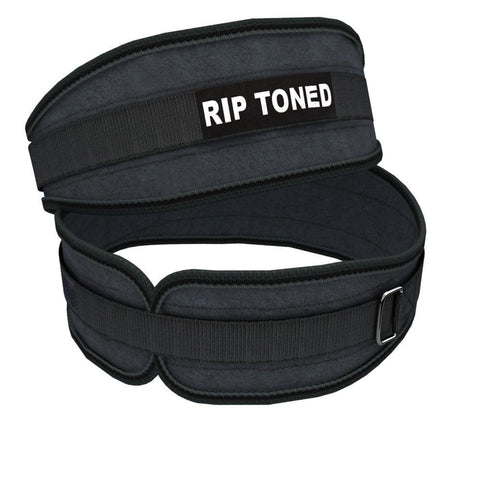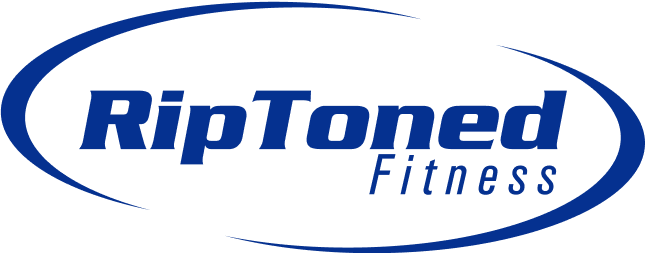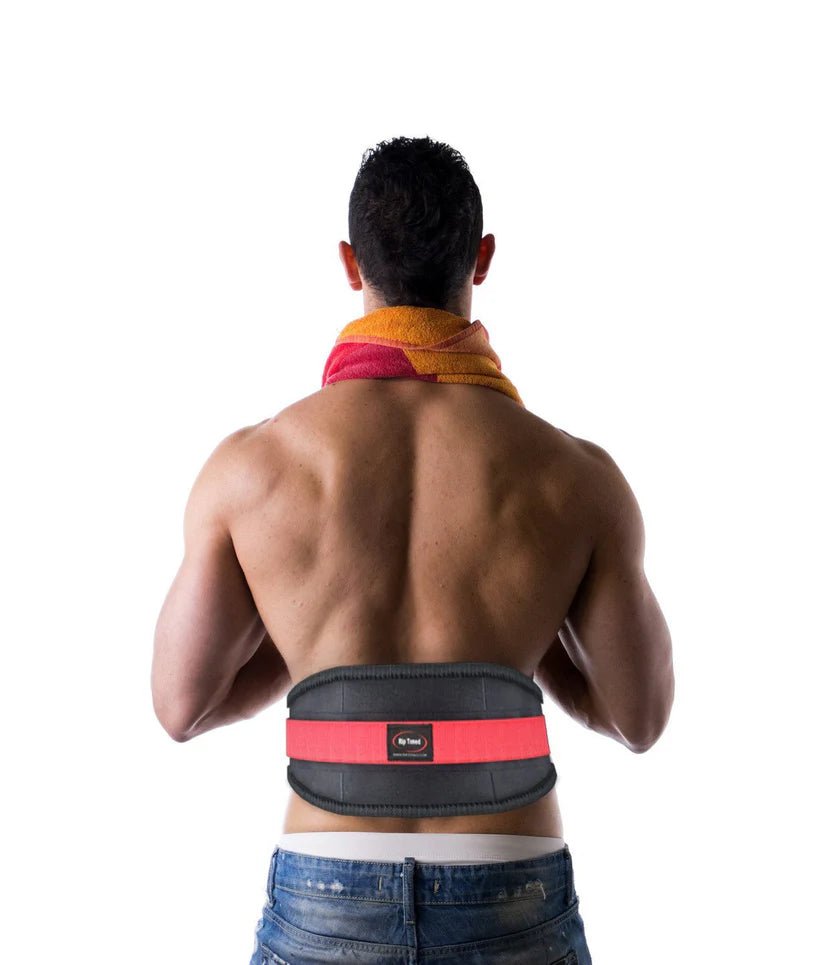In the world of weightlifting and strength training, the pursuit to lift heavier weights safely and effectively often leads lifters to explore various supportive tools. One such tool is the lifting belt, a staple for those looking to enhance their lifting capabilities.
Lifting belts help to brace properly, and they play a crucial role in increasing intra-abdominal pressure, which is essential when handling heavy weights. This added support allows athletes to manage more weight while minimizing the risk of injury.
However, understanding when and how to use a lifting belt is key to maximizing its benefits. This blog will delve into the purpose and advantages of lifting belts, guiding you on their appropriate use to boost your performance and safety.
What Are the Lifting Belts?
Before diving into when to use a lifting belt, it's essential to understand what they are. Lifting belts are thick, sturdy wraps made of leather or synthetic materials, often with adjustable buckles or velcro closures. They're typically worn around the waist and lower back region and provide support for the core muscles during heavy lifts. Additionally, lifting belts come in different widths and thicknesses, allowing you to choose one that best suits your body and training needs.
Moreover, lifting belts are not magic tools that automatically make you stronger. They work by providing external support for your core muscles, allowing them to contract more efficiently and protect the spine during heavy lifts. Therefore, it's crucial to use belts only when necessary and not rely on them as a substitute for proper form and technique.
Does Weight Determine Belt Use?
When it comes to whether or not you should wear a lifting belt, weight isn't the only factor to consider. While it's common for lifters handling extremely heavy weights to use a belt, this doesn't mean that lighter lifters shouldn't use them at all.
Ideally, you should wear a lifting belt when performing exercises that directly load the spine, such as squats, deadlifts, and overhead presses. These movements put significant stress on the core muscles and are often performed with heavy weights. Additionally, if you have a history of back pain or injury, using a belt can provide extra support and stability during these exercises.
However, for less challenging lifts like bicep curls or lateral raises, wearing a lifting belt may not be necessary. In fact, using a belt during these exercises may impede your body's natural movement patterns and reduce its effectiveness in building stability and strength.
How Many Kinds of Weight Lifting Belts Are There?
As mentioned earlier, lifting belts come in various widths and thicknesses, making it essential to choose the right one for your body and training style.
The most common types of lifting belts are powerlifting belts and weightlifting belts. Powerlifting belts are wider (around 4-6 inches) and thicker (usually 10-13 mm) than weightlifting belts, providing more support for heavy lifts like squats and deadlifts. Weightlifting belts, on the other hand, are narrower (around 2-3 inches) and thinner (usually 6 mm), allowing for greater flexibility during explosive movements like cleans and snatches.
Moreover, there are also tapered or contoured belts, which have a wider back and narrower front, providing extra support for the lower back while allowing more freedom of movement in the front. These are often preferred by those with longer torsos or performing exercises that require bending at the waist.
When to Use a Lifting Belt
Now that you understand what lifting belts are and the different types available, let's dive into when to use them. As mentioned earlier, wearing a belt isn't necessary for every exercise or training session. Here are some key factors to consider before reaching for your weightlifting belt:
Weight and Intensity
As mentioned earlier, weight isn't the only determining factor when using a lifting belt. However, it does play a significant role in deciding whether to wear one or not. Generally, it's recommended to use a belt for exercises involving heavy weights (around 85-90% of your maximum) or high-intensity sets.
For example, if you're performing squats with heavier weights as part of your leg day routine or attempting a new personal record in deadlifts, wearing a belt can provide extra support and stability to help you handle the load safely and effectively.
Compound Lifts
Lifting belts are most commonly used for heavy compound lifts like squats, deadlifts, and overhead presses. These exercises put significant stress on the spine and require strong core strength and stability to perform correctly. By wearing a weightlifting belt, you can create intra-abdominal pressure, compressing your abdomen against the belt's support and creating more rigidity in your core muscles. This added pressure helps stabilize your spine during these challenging movements, minimizing the risk of injury.
History of Back Pain or Injury
If you have a history of back pain or injury, wearing a lifting belt can provide extra support and stability during your workouts. This is especially true for exercises that directly load the spine, like squats and deadlifts. By wearing a belt, you can distribute the weight more evenly across your core muscles, reducing the strain on your back and potentially preventing further injury.
Olympic Lifts and Leg Press
Aside from the heavy compound lifts mentioned earlier, there are some other exercises that may be beneficial, such as wearing a weightlifting belt. These include Olympic lifts like cleans and snatches, as well as leg press movements using heavier weights. In these exercises, having proper core strength and stability is essential, and using a belt can help you maintain proper form and prevent injuries.
Lighter weights in these exercises may not require a weightlifting belt, but as the weight increases, it's recommended to use one for added support.
Personal Preference
Ultimately, whether or not to use a lifting belt should be a personal choice. Some lifters prefer the added support and stability provided by a belt for all their lifts, while others only use them for specific exercises or on heavier training days. It's crucial to listen to your body and assess your own needs when deciding whether to wear a weightlifting belt.
Weight belt use is a personal choice and should not be solely based on weight or other external factors. Instead, it's essential to understand the purpose and benefits of using a lifting belt and make an informed decision based on your body, training needs, and personal preferences.
Tips for Proper Weight Belt Use
When using a weightlifting belt, it's essential to ensure that you're wearing it correctly and not relying on it solely for support. Here are some tips for proper weight belt use:
- Place the belt in the correct position: The belt should sit snugly above your hip bones and below your rib cage.
- Tighten the belt properly: The belt should be tight enough to provide support but not so tight that it restricts your breathing or movement.
- Don't rely on the belt alone: Remember that a lifting belt is just one tool in your training arsenal. It should not be used as a substitute for proper form, technique, and strength.
- Use a belt that fits properly: Avoid using a belt that is too big or too small for your body. This can affect its effectiveness and may lead to injury.
- Gradually increase weight and intensity: If you're new to using a weightlifting belt, it's essential to gradually increase the weight and intensity of your lifts while wearing it. This allows your body to adjust and build strength in the core muscles without relying solely on the support of the belt.
By following these tips, you can ensure that you're using a lifting belt correctly and safely, reaping its benefits during your training sessions.
Potential Drawbacks and Misconceptions
While weightlifting belts can be a useful tool for many lifters, there are some potential drawbacks and misconceptions that you should be aware of. Here are a few to keep in mind:
- Over-reliance on the belt: As mentioned earlier, wearing a lifting belt should not replace proper form and technique. Relying too heavily on the belt for support can lead to weaker core muscles and an increased risk of injury when not wearing it.
- False claims about reducing waist size: Some manufacturers may claim that wearing a weightlifting belt can help reduce waist size or promote weight loss. However, there is no scientific evidence to support these claims. Weightlifting belts serve a specific purpose in providing support and should not be used for any other reasons.
- Belts are not a one-size-fits-all solution. As with all fitness equipment, weightlifting belts come in various sizes and styles. It's essential to choose one that fits your body properly and provides the necessary support without being overly restrictive.
By understanding the potential drawbacks and misconceptions surrounding weightlifting belts, you can make an informed decision about whether or not to incorporate them into your training routine.
FAQs
Is a leather belt better than a nylon belt?
Both leather and nylon weightlifting belts have their pros and cons. Leather belts tend to be more rigid, providing excellent support for heavy lifts, while nylon belts are more flexible and can be more comfortable to wear during longer training sessions.
Should I wear a lifting belt for every exercise?
No, wearing a weightlifting belt for every exercise is not necessary. It's best to reserve its use for heavy compound lifts or exercises where you feel it may benefit your performance and safety.
Will a lifting belt prevent intra-abdominal pressure when creating it?
A weightlifting belt does not prevent intra-abdominal pressure; instead, it helps to maintain it. By providing support and stability to the core muscles, a lifting belt can help you create and maintain proper intra-abdominal pressure during heavy lifts.
Conclusion
In conclusion, using a lifting belt can significantly enhance your performance and safety during heavy lifts by providing essential support and helping create intra-abdominal pressure. It's crucial to use the belt correctly, focusing on situations that demand extra stability, like squats and deadlifts with near-maximal weights.
Remember to assess your personal lifting goals and needs when deciding to incorporate a belt into your routine. While a lifting belt offers considerable benefits, ensure you continue to strengthen your core muscles independently to maintain balance and prevent over-reliance on a belt for stability.

Click Here to Learn More About the Rip Toned Lifting Belt. Discover the optimal times to use a lifting belt to maximize its benefits and protect your lower back

